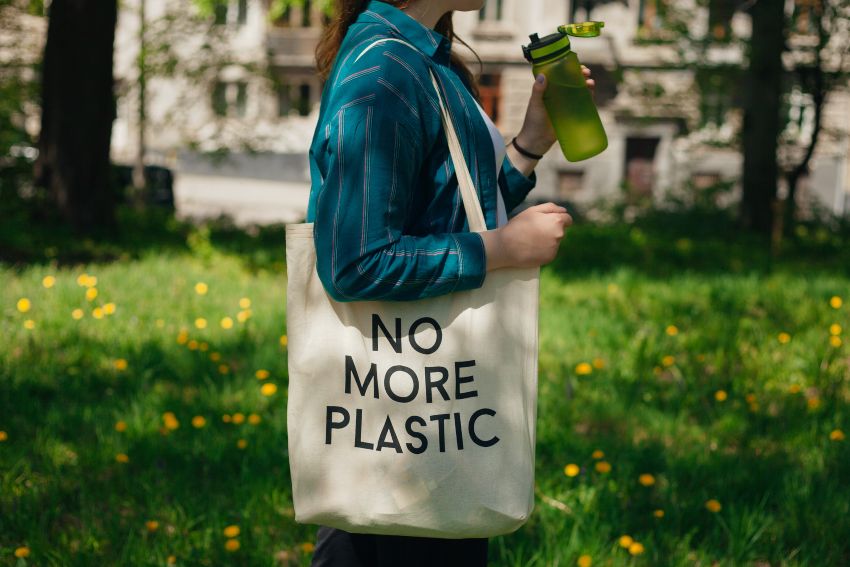19 May 2022
Can Changing Our Behavior Help with a Changing Climate?
By Kelly Davis

Discussions about mitigating climate change often focus on large-scale approaches. However, research is increasingly finding that individual behavioral changes can be essential to addressing global warming.
The Center for Behavior and the Environment — a group of behavioral and social scientists, focused on identifying solutions to climate change — identified thirty “behavioral solutions” that could mitigate as much as 36.8 percent of global emissions through 2050. Doing so, researchers found, would limit the increase in the earth’s temperature to less than 2°C, the upper limit set by climate scientists to avoid catastrophic weather changes.
“Adoption of sustainable behaviors is a key component of solving the climate change challenge, especially if scaled up through collective action across communities and countries,” researchers from the center found.
And people want to make those changes. A September 2021 Pew Research survey of nearly 20,000 people in 17 countries, including the U.S., revealed that 8 in 10 people were willing to change at least some behaviors to reverse the effects of climate change. Roughly one-third of those surveyed said they would consider making “a lot of changes.”
The big question is how to make climate-friendly behavior changes attractive — and permanent — when there’s no immediate tangible benefit.
 Jennifer Tabanico (pictured), who teaches the Behavior Change Strategies for Sustainability course at UC San Diego Extended Studies, said research shows that “normative social influence” – basically wanting to fit in with the group – is one way to change individual and community behavior.
Jennifer Tabanico (pictured), who teaches the Behavior Change Strategies for Sustainability course at UC San Diego Extended Studies, said research shows that “normative social influence” – basically wanting to fit in with the group – is one way to change individual and community behavior.
“It’s been demonstrated time and time again that people tend to go along with the group,” she explained in a recent profile. “Whatever the majority of people are doing, people tend to fall in line.”
In other words, when a person, governmental body or even a corporation realizes they’re lagging on environment-friendly choices compared to their peers, they’ll be more motivated to change.
The United Nations Environment Programme recommends removing “unsustainable options” (see: plastic bag bans) and “the hassle factor.” Instead of airlines requiring people to opt-in to a meat-free meal, flip the script and make vegetarian options the default dish with meat available by special request. Apartment buildings can place recycling bins on each floor rather than having just one trashcan on the ground floor or outside.
The Center for Behavior and the Environment looked at thirty changes people can make to live more environmentally friendly lives and broke them down into four categories: food, agriculture and land management, transportation, and energy and materials. They pulled the recommendations from the book Drawdown: The Most Comprehensive Plan Ever Proposed to Reverse Global Warming, which lays out a whopping 80 solutions to mitigate climate change.
“We believe that empowering individuals to make a difference can further help turn the tide in how businesses, governments, states, and countries choose to act on climate,” the report says.
The “food” category includes switching to a plant-based diet, composting food waste, and using energy-efficient cooking devices.
Farming and land management solutions tend to focus on industrial-scale agriculture rather than small farms. However, there are a variety of options for small farms, including installing water- and energy-saving irrigation systems, such as drip systems and planting trees.
Transportation recommendations include opting to drive electric vehicles, using ride-sharing services or carpooling, public transit, working from home when possible, and using video-conferencing instead of traveling to meetings.
When it comes to energy solutions, households are encouraged to install rooftop photovoltaic systems and use solar energy to heat water. Recommendations also include energy-efficient lighting, water-saving devices like low-flow showerheads and setting up a “micro wind” system — small wind turbines that can help provide household electricity.
The report notes that success requires turning individual behavior changes into collective action. For example, at Rutgers University in New Jersey, computer labs set the default printer option to double-sided pages instead of single-sided.
“Simply by changing the default, the lab saved 7,391,065 sheets of paper in the first semester (equating to roughly 620 trees for the semester and 1,280 trees for the academic year),” the report says.
And a London School of Economics and World Resources Institute study found that menus with a separate “vegetarian” section resulted in fewer people opting for a vegetarian meal. When the meat-free options were included with meat options, more people chose a meatless meal.
Redesigning a menu or changing a default printer setting — making it easier for people to engage in certain behaviors — is known as “choice architecture.”
By gaining a deeper understanding of what makes people tick, climate researchers can find new ways to encourage individuals and groups to make climate-friendly choices.
The report concludes with the message that “It is imperative that we act now to preserve the planet’s rich natural resources for generations to come” and concludes with, “Behavioral science offers us a promising path forward.”
Are you aware of other ways that individuals can help slow climate change? Share them in the comments below.